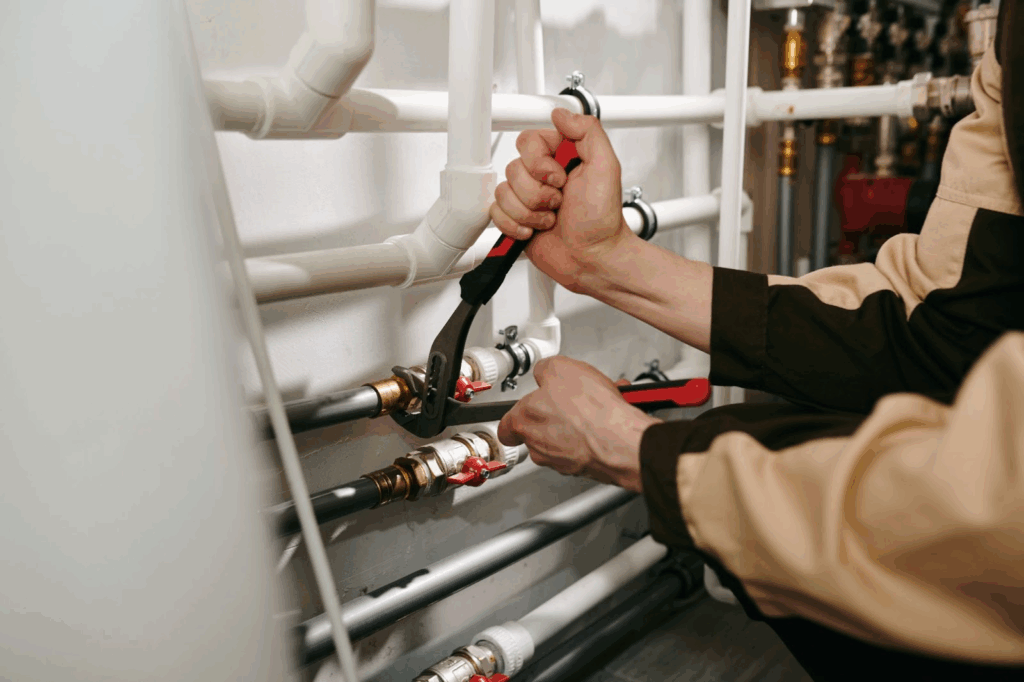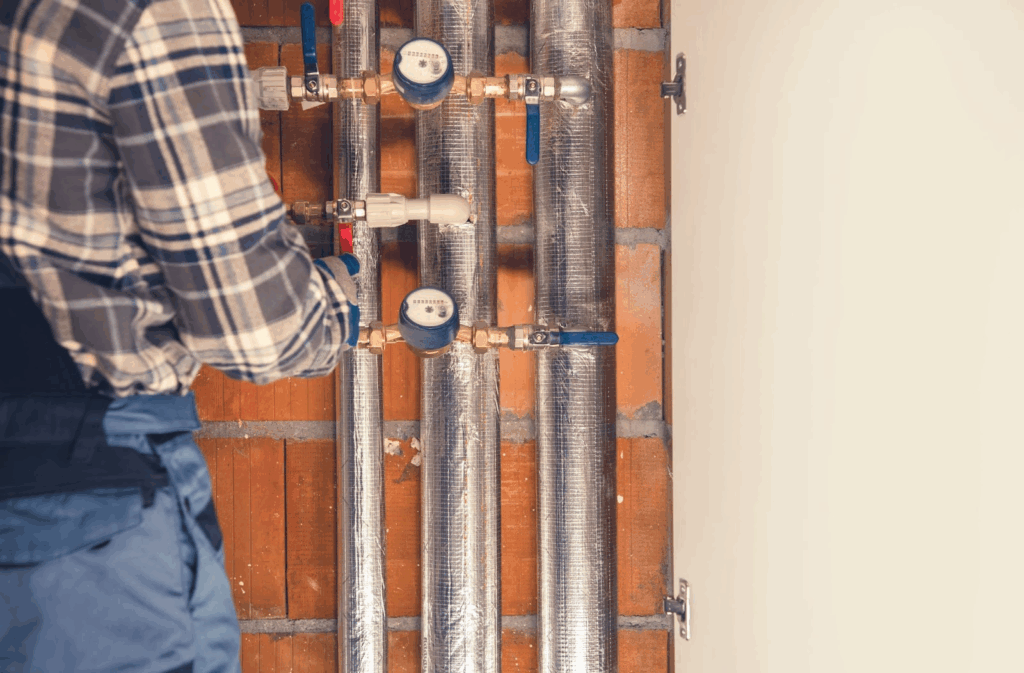Gas leaks pose a significant risk to safety, property, and health. Detecting a gas leak is crucial to preventing potential hazards like fires, explosions, or exposure to toxic fumes. Knowing what to look for and how to act can make a critical difference in ensuring safety. Gas leak detection involves recognizing warning signs and taking the proper steps to address the issue effectively.
Common Signs of a Gas Leak
Being familiar with the common signs of a gas leak ensures prompt action and a safer environment. Recognizing these indicators allows individuals to prevent further risks and damage to property. Awareness of the warning signs can also help address issues before they escalate. Knowing what to look for empowers quick decisions that protect everyone involved.
The Smell of Sulfur or Rotten Eggs
A strong, unpleasant smell resembling rotten eggs is one of the most noticeable signs of a gas leak. Utility companies add this odor to natural gas to make it detectable, as natural gas is odorless. If this smell is noticed, it indicates the presence of gas in the air and should be addressed immediately.
Hissing or Whistling Sounds
A gas leak may produce a hissing or whistling sound near appliances, pipelines, or gas meters. This noise occurs when gas escapes under pressure through a crack, hole, or loose connection. Paying attention to these sounds is crucial, especially in quiet environments that are easier to detect.
Dead or Discolored Vegetation
Dead or discolored patches of grass or plants near gas lines can signal a leak underground. Escaping gas depletes oxygen in the soil, causing vegetation to wither and die. These visual cues often point to hidden leaks that might otherwise go unnoticed.
Unexplained Increase in Gas Bills
A sudden spike in gas bills without any change in usage could indicate a gas leak. Leaks cause continuous gas flow, leading to higher consumption and costs. Monitoring bills regularly can help identify unusual trends that may signal a problem.
Feeling of Dizziness or Nausea
Exposure to leaking gas can cause physical symptoms like dizziness, nausea, or fatigue. Prolonged exposure to natural gas affects oxygen levels, leading to health complications. Seeking fresh air immediately upon experiencing these symptoms indoors can help alleviate the effects.
Condensation on Windows or Surfaces
Excess moisture or condensation on windows and surfaces inside a building may indicate a gas leak. Leaking gas sometimes creates imbalances in humidity levels, causing condensation to appear. Checking for other signs in combination with this can confirm the presence of a leak.
Potential Causes of a Gas Leak
Knowing the potential causes of a gas leak helps prevent dangerous situations and ensures proactive safety measures. Identifying the factors that lead to leaks allows for better maintenance and reduces the risk of emergencies. Awareness of these causes can save lives and protect property.

Aging Pipelines
Pipelines deteriorate over time, leading to cracks, corrosion, or weakened joints. Materials used in older gas systems may break down, especially when exposed to moisture or shifting ground. Regular exposure to environmental elements can weaken the infrastructure of aging pipelines. Deterioration increases the risk of leaks, particularly in systems used for decades.
Faulty Connections
Loose or improperly connected fittings can allow gas to escape into the air. Gaps in valves, joints, or appliance connections often develop during installation or regular use. Misaligned or poorly secured connections fail to seal correctly, creating leaks. Weak spots in these areas usually go unnoticed until gas begins escaping.
Appliance Malfunctions
Defective gas-powered appliances are a common source of leaks in residential and commercial settings. Pilot lights that fail to ignite, broken burners, or damaged valves disrupt the gas flow. Malfunctions often occur due to wear on internal components over time. Appliances designed for gas usage may release small amounts of gas unnoticed during failure.
Corroded Gas Lines
Metal gas lines exposed to environmental elements often develop rust or corrosion, compromising their durability. High humidity or chemical exposure accelerates the process of material degradation. Corrosion creates small holes or weak spots where gas can escape undetected. Over time, these vulnerabilities increase the likelihood of leaks in exposed or buried gas lines.
Natural Disasters or External Damage
Events like earthquakes, severe storms, or nearby construction frequently damage gas lines. Ground movement caused by natural disasters leads to cracking or misalignment of pipelines. Physical impacts during construction projects or heavy equipment use often puncture gas lines. External damage introduces immediate risks and makes pipelines more susceptible to leaks.
Steps to Detect a Gas Leak
Detecting a gas leak earlier is critical for maintaining safety and preventing serious hazards. Effective methods can help identify leaks promptly, reducing risks to health and property. Using the right approaches ensures timely action to address any issues.
1. Use Your Senses
The smell of rotten eggs, hissing sounds, or visual signs like dead vegetation are reliable ways to detect a gas leak. A strong odor in the air is a deliberate warning from utility companies to natural gas. Listening to unusual hissing or whistling noises near appliances or pipes can indicate gas escaping under pressure. Observing dead or discolored plants in areas where gas lines run underground can reveal hidden leaks. Attention to these sensory signs is an essential first step in identifying potential problems.
2. Install a Gas Leak Detector
Gas leak detectors provide a reliable and continuous method of monitoring for leaks. These devices can detect the presence of combustible or toxic gases in the air. Audible alarms or visual indicators are triggered when gas levels exceed safe limits, alerting occupants to take action. Detectors should be installed near gas appliances or areas with a higher risk of leaks. Regularly testing and maintaining these devices ensures they remain effective over time.
3. Perform a Soapy Water Test
A soapy water test is a simple and effective method to locate gas leaks in pipes or connections. Applying soapy water to the suspected area will reveal bubbles if gas is escaping. This method works well for minor leaks that may not produce obvious odors or sounds. The test can be performed using a spray bottle, sponge, or cloth to apply the soapy solution. Observing for bubbles forming after application confirms the presence of a leak.
4. Monitor Your Gas Bill
A sudden increase in your gas bill without any significant changes in usage could indicate a leak. Continuous gas flow caused by a leak often results in unexplained spikes in consumption. Comparing current bills with previous ones can help identify unusual patterns or discrepancies. Addressing these increases may prevent further damage or wasted resources. Consistently monitoring utility bills is a proactive approach to detecting potential issues.
5. Hire a Professional Inspection Service
A professional gas leak inspection service offers the most accurate and thorough detection of gas leaks. Experts use advanced equipment to locate leaks, including those that are hidden or too small to detect manually. Their experience ensures leaks are addressed safely and efficiently, minimizing risks to property and health. Professionals can also advise on preventing future leaks by identifying areas of concern. Scheduling regular inspections promotes long-term safety and peace of mind.
How Professionals Detect a Gas Leak
Gas leak detection services safeguard homes and businesses from potential dangers. They accurately detect and address gas leaks with expertise, specialized tools, and careful handling to prevent further risks. Relying on trained professionals ensures the problem is resolved efficiently while maintaining the safety of everyone involved.

Advanced Tools and Technology
Professionals use specialized equipment to detect leaks that are difficult to identify through manual methods. Gas detectors, infrared imaging, and pressure testing precisely locate leaks. These technologies allow experts to find hidden or small leaks that may not be noticeable to the untrained eye. Access to advanced tools ensures thorough inspections and practical solutions.
Expertise and Training
Certified technicians are trained to handle gas leak detection safely and accurately. Their knowledge of gas systems and potential causes allows them to diagnose problems quickly. Extensive training ensures that professionals follow proper safety protocols during inspections and repairs. The combination of expertise and experience reduces the chances of overlooking critical issues.
Accurate and Thorough Inspections
Professional inspections go beyond surface-level checks, identifying leaks in hard-to-reach areas. Thorough evaluations ensure that every gas system component, from pipelines to appliances, is inspected. This level of detail minimizes the risk of missed leaks that could escalate into serious hazards. Comprehensive inspections provide peace of mind by addressing both current and potential issues.
Safe and Efficient Repairs
Repairing gas leaks requires precise techniques and materials to ensure long-term safety. Professionals handle repairs with minimal risk, using methods that adhere to safety standards. Their expertise prevents further damage to gas lines or appliances during repair. Efficient repairs restore the system’s integrity and prevent recurring leaks.
Prevention of Future Issues
Experts recommend preventing leaks and maintaining gas systems’ safety over time. Identifying areas of concern during inspections allows for proactive measures to reduce risks. Regular professional evaluations help keep gas systems in optimal condition. Preventive advice from professionals contributes to long-term safety and reliability.
Staying Safe With Reliable Gas Leak Detection
Proactive gas leak detection is essential for protecting safety and preventing property damage. Recognizing warning signs early and addressing them reduces the likelihood of dangerous incidents. Regular maintenance of gas systems and appliances helps identify potential issues before they escalate. Seeking professional assistance ensures accurate detection and practical solutions. Prioritizing reliable methods of detection creates a safer environment for everyone involved.
Get reliable plumbing guidance on our Castaneda’s Plumbing and Rooter blog.


3 Comments
lucky jet
Lucky Jet is a must-try for fans of fast gambling.
how to aviator game download
Play Aviator and catch the right moment to cash out.
123Movies
I am quite thrilled to have found this website on Bing, as it is exactly what I was looking for and I have saved it to my favorites.